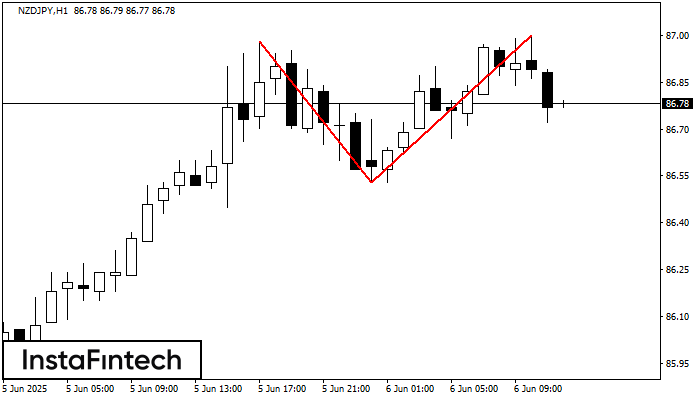Double Top
was formed on 06.06 at 11:00:19 (UTC+0)
signal strength 4 of 5

On the chart of NZDJPY H1 the Double Top reversal pattern has been formed. Characteristics: the upper boundary 87.00; the lower boundary 86.53; the width of the pattern 47 points. The signal: a break of the lower boundary will cause continuation of the downward trend targeting the 86.13 level.
Figure
Instrument
Timeframe
Trend
Signal Strength







